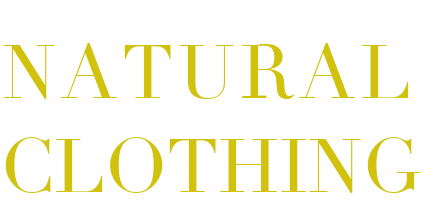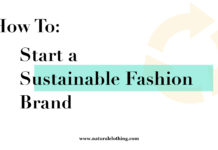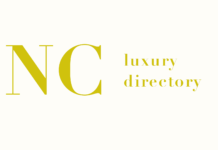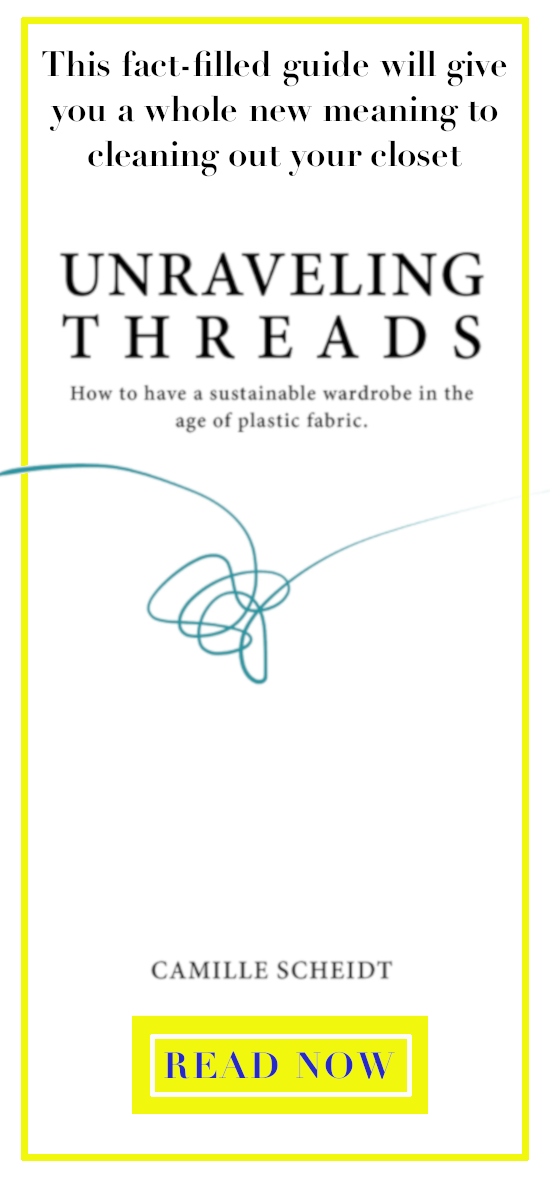Is leather sustainable? It can be. When natural leather is sourced, processed, and disposed of responsibly, it can be a sustainable material. Manmade leather alternatives however, such as pleather and vegan leather, are largely unsustainable and mostly plastic.
Let’s first look at the natural leather industry. In order to increase speed and profits, the vast majority of the leather industry employs a number of extremely harmful methods. These methods expose workers, communities in leather processing areas, animals, and consumers to high levels of extremely hazardous materials. They also produce a staggering amount of hazardous waste that is often unregulated and dumped without proper treatment. Fortunately, there are sustainable and ethical alternatives in the leather world. We’ll look at those next, but first, let’s look at what goes into producing a leather bag, boot, or belt.

Leather Treatment & Stabilization
Tanning is a process that stabilizes and preserves leather. The tanning process prevents leather from decomposing or stiffening into an unusable material. The processing that takes a hide from the source animal to workable leather begins one step before tanning, with what’s known collectively as beamhouse operations.
Beamhouse Operations – Hide Preparation
Skins are cured and packed with salt to keep them from putrefying between the point of slaughter and beamhouse processing. The beamhouse process begins with cleaning the hide to remove any remaining meat, fat, and hair. Enter: harsh chemicals.
Unfortunately, during this stage, lime pastes, sodium sulfide, ammonium salts, and bleach are routinely used. This step accounts for 80-90% of the pollution created by the leather industry. It produces noxious gases and solid waste sludge, including hydrogen sulfide as well as lime and ammonium salts. Keep in mind, this isn’t the green lime garnishing your drink (cheers) but a caustic alkali Ca(OH)2. The hide is then sometimes pickled with salt and sulfuric acid. Once the hide is cleaned in this way, it is considered a rawhide.

Tanning Leather
Then, the rawhide is tanned in a bath. Tanning is a process that softens the rawhide while preserving it. This step is to keep the leather from decomposing. The difference between a rawhide and a tanned hide are evident when they are exposed to water and heat. A rawhide hardens when exposed to heat and decomposes after exposure to moisture. A tanned hide maintains its flexibility when exposed to heat and does not putrefy even after exposure to moisture.
Chrome Tanning – Chrome Sulfate
Chrome tanning processes are used by an estimated 90% of the world’s tanneries. Chromium is cheap and efficient. It softens the leather in just a few hours. It has been widely used since the 1890s. Many countries where leather is processed have lax environmental protections. India, China, and Bangladesh are some of the largest producers of the world’s leather and have lenient to no standards enforced. The leather industry is a multi-billion dollar industry (some estimates put the number at $100 billion) that brings in critical tax revenue for many countries. These countries unfortunately see these much needed health and environment regulations as obstructions that may jeopardize their revenue.
Chrome Related Pollution & Hazards in Leather Processing
The hazardous wastewater produced in the chrome tanning process is heavy with chromium and other toxic compounds including lead and arsenic. It is dumped, more often than not untreated, into rivers and waterways where it directly impacts communities and wildlife in the area. Exposure is hazardous to not only workers but entire ecosystems in the surrounding area. Communities in many of these areas, along the Ganges in India for example, use these polluted waterways for drinking, bathing, and farming. Chromium can cause a host of skin problems when encountered without protection. It can cause cracked, dry, and scaled skin. It also causes what are known as “chrome holes”, which are corrosive ulcers that are stubborn to heal.
These tanning factories also create huge amounts of air pollution and landfill waste. A staggering 70% of the mass of a virgin hide is thrown out as waste – not before being treated with chemicals mind you. Hence the major sludge production mentioned earlier. The solid waste consists of about 75% leather shavings, which can easily become airborne and quickly spread. This dust contains an especially dangerous form of chromium which has already bonded with a protein. This form is more readily metabolized and can enter the body through inhalation and ingestion, as well as contact with skin.
Many plants and animals need a minute amount of chromium to help regulate their metabolic functions. However, the amount of chromium used for treating leather is on another scale entirely. In such large quantity as is released through the tanning process, chromium is extremely hazardous. In abundance, chromium causes cancers, respiratory problems, infertility, birth defects, and developmental problems in animals big and small.

Vegetable Tanning – A Sustainable Alternative
Instead of using chromium, the process of vegetable tanning uses traditional leather processing methods that can cut out toxins entirely. Natural tanning requires rawhides to be soaked for several weeks in baths with tannins derived from natural sources like tree bark and fruits. The tannins coat the collagen proteins in the hide with a protective layer, rendering them less prone to bacteria growth and more water resistant. This also increases flexibility in the hide.
Vegetable tanning is a longer process that is most definitely worth it. A leather bag or pair of boots can last you a lifetime and even be passed down generation to generation. If it takes a few more weeks to be sustainably derived, then so be it.
Wet White Tanning
Wet white tanning is an alternative to chromium tanning that uses a combination of synthetic tannins, vegetable tannins, glutaraldehydes, and minerals including aluminum and zirconium. The resulting wastewater, leather shavings, and leather product hold no reactive tanning agents. This method of tanning uses the same equipment that chrome tanneries are using and have already invested in.
Interestingly enough, the automotive industry has been instrumental in the drive for more sustainable leather options. The automotive industry is the largest consumer of chrome-free leather. This was spurred by regulations set by the EU in 2000 to increase recycling and proper disposal of abandoned vehicles. Chrome-free leather is biodegradable and much easier to handle for disposal. In fact, wet white tanned leather can reach half of its original weight with 56 days when being decomposed.
Finishing Leather Processes
After tanning, the leather is thinned through a process known as crusting. Crusting releases a significant amount of dust and solid waste. After crusting, the hide is then sometimes tanned again, colored, lubricated, softened, and shaped.
Other Leather Processing Dangers
Raw hides can be an incubator for anthrax. Posing yet another airborne risk for those working in and near tanning factories. Additionally, with few workplace regulations in many leather processing factories, workers are subject to a number of dangers. These include improper handling of toxic chemicals, inadequate training and access to safe workplace attire, and improper disposal of waste which can quickly lead to slippery and precarious work surfaces.
The Animal Element of Leather
Unfortunately, since so much of the leather industry is unregulated, the animals at the source of the $100 billion dollar industry are no exception to mistreatment. Certifications of leather to ensure ethical animal husbandry can be tricky to navigate. Let’s take a look at a few of them.
IVN Natural Leather Standard
The IVN Natural Leather standard encompasses environmental impact of the leather, animal welfare, and social criteria of the leather at every point of processing. All materials used in processing are tested for toxicity and biodegradability. This means the use of chromium, glyoxal, and short-chain chlorinated paraffins is prohibited. Hides from endangered species are prohibited. The place of slaughter must be known and documented. Environmental and social policies must be adhered to in manufacturing sites. To ensure these standards are met, on site inspections are performed, as well as residue testing of products. These standards are similar to those set by the Global Organic Textile Standard (GOTS) for fiber textiles. Unfortunately, the GOTS neglects to include leather as a textile and does not offer a route for leather certification.
The Rainforest Alliance
The Rainforest Alliance certifies ranches that raise animals for leather production. These ranches are certified with sustainable farming standards that address animal welfare, prevention of deforestation, conservation of biodiversity, human wellbeing, conservation of natural resources, and respect to the land on which indigenous people reside. Unfortunately, the Rainforest Alliance certification only regulates the processes until slaughter of the animal.
Leather Alternatives – Vegan Leather & Pleather
Most imitation manmade leather on the market is not a sustainable or healthy choice. Known by many names, PU leather, pleather, leatherette, PVC leather, or vegan leather, faux leather is another plastic synthetic material. Most pleather is made from polyurethane, polyester, and polyvinyl chloride. These materials, derived from coal, natural gas, and oil, have a high impact on the environment in production, during product life, and after being discarded. Unlike natural leather, these manmade leathers will not decompose for hundreds of years. Pleather and vegan leather materials are also not breathable and are more prone to bacteria growth.
Cork as a Leather Alternative
Cork fabric is proving to be a sustainable leather alternative for many products. Products made with cork leather are comparable to leather in terms of longevity. Think of a cork in a wine bottle – they’re trusted to stand the test of time. Cork fabric is also a great vegan alternative. It is naturally produced, can be sustainably harvested, water repellant, fire retardant, scratch proof, and stain resistant. Compared to leather that can be somewhat intensive to clean, oil, and care for, cork fabric can be washed simply with soap and water. Cork leather is also recyclable.
Cork grows as a tissue layer in bark on cork oak trees (Quercus suber). The trees can live for 200 years and are not cut down when the bark is harvested. The bark is harvested on a well kept schedule that does not harm the tree.
Cork fabric does not, however, have quite the same look as leather. If leather is what you seek, read on.
MuSkin – Phellinus Ellipsoideus Leather Mushroom Skin
MuSkin is a material extracted from mushroom cap skins. The mushroom, Phellinus ellipsoideus, is native to subtropical forests. MuSkin is not waterproof, but can be treated with an eco friendly wax to achieve this property. Alone, MuSkin does not have great mechanical strength, but can be paired with something structurally stronger to achieve a durable product. It is breathable, pliable, and is a 100% biodegradable material. Unfortunately at this point, MuSkin does not appear to be widely used, so longevity and wearer satisfaction are difficult to judge.
The Phellinus ellipsoideus is somewhat of a celebrity in the fungi world. It’s a perennial mushroom, allowing the species to grow very large over longer lifespans. The Phellinus ellipsoideus is a species of polypore fungus that produced the largest fungal fruit body recorded yet. The largest mushroom fruit was found on Hainan Island. Analysts estimated the mushroom to be 20 years old and weigh in somewhere between 800 – 1,100 lbs.
Fish Skin Leather
Yea! We’re wrinkling our noses too. But unfurl them! There is no smell. Fish skins collected as a by product from the commercial fishing industry are dried, deodorized, and dyed with vegetable dye. Since fish skins are usually smaller than most hides, they’re used for smaller products like shoes and accessories. Unfortunately, many manufacturers use highly toxic chemicals to clean and deodorize the hides of the fish.
Fortunately, there are wonder women like Marielle Philip who clean and tan these fish skins sustainably. Check out her site and shop here for some unbelievably beautiful fish skins.
Leather Made from Apples – Pellemela
Here’s another odd and brilliant vegan leather alternative concept growing: a leather alternative made from apples. The material, known as pellemela, is sustainably sourced from discarded apple peels and core waste from juiced apples. The organic apple scraps are dehydrated and ground into a flour. Binders and coloring agents are then added to the flour to create the vegan leather alternative which is, as of now, used mostly for shoes and handbags. The final apple leather products are water resistant, breathable, and said to last and wear well. Pellemela can be produced in a variety of thicknesses, grains, and colors.
The apple waste is sourced and processed in Italy, where apple trees are abundant. Not only is the local apple economy supported with this apple leather breakthrough, but waste is repurposed. The apple scraps were previously burned as a method of disposal.
Apple leather has great potential for use in the apparel and furniture industries. Italian leather designer, Fedon, has been working on product prototypes using pellemela and some hotels and restaurants are already opting to use the vegan and ecofriendly apple leather for their interiors.
For a look at the Kickstarter for Happy Genie, a handbag and clutch designer utilizing this new material, check them out here.
For apple leather shoes in a low, mid, and high heel and fringy accessories, take a look at women’s shoe designer Veerah and their Appeel line.
And if you’re looking for something a bit more citrusy, check out how an innovative Italian brand is spinning cellulose from citrus juice waste into a silky new sustainable fabric.
Modern Meadow’s Innovation to Grow Leather
Modern Meadow, a bioengineering group with a mission to take the ‘animal’ out of ‘animal products’, has developed a system to biofabricate leather. By harvesting a strain of yeast that produces collagen, Modern Meadow has eliminated the need for the beamhouse operations all together. In a sense, traditional tanning removes everything but the collagen protein of a hide (remember how much solid waste is produced?). Instead of stripping everything away from a hide, Modern Meadow is building up to a hide. They encourage the nanofibers created by collagen to form into sheets of leather. The nanofibers are highly tunable, allowing them to take command of properties like thickness and stretchiness.
By skipping the Beamhouse processing, Modern Meadow cuts out a hugely polluting phase in leather processing. Still in the research and development stages, Modern Meadow has not yet announced tanning and finishing methods for their products. We’re very excited to see this leather alternative develop further.
In a way, Modern Meadow’s command of nanofibers (which you can check out here) reminds us of the production of another superfabric, Lyocell.
What To Do
As always, buy less, and buy better. In this case, buying second hand, vintage, and vegetable tanned or wet white tanned leather are the most sustainable options (the first two being the most). There are a number of awesome designers reclaiming leather and upcycling the material into some beautiful collections. The Sway, a leather designer based in New York City, is one of our favorite examples.
















I read that Pemella is a leather substitute made of 50% recycled apple fibre and 50% polyurethane.
Ref: Frumat, from apples to skins Published on 5 September 2018 in Smart Creation
Can you tell us a little more about this 50 % of polyurethane? Is it really eco-friendly?
Hi Florence,
Thanks for your question! When I did the original research for Pellemela, the polyurethane was referenced just simply as a glue. I’ve looked into it further to answer your question and haven’t yet found a clear and decisive ‘ingredient list’. Some sources say 70% apple waste + 30% polyurethane and some call out a 50%/50% mixture, while others don’t reference the polyurethane at all. It also does not specify the composition of the polyurethane itself.
I’ve seen a lot of promising research that uses natural oil polyols (biopolyols – which are derived from vegetable oils) in place of synthetic oils in the production of polyurethane. But again, for Pellemela I can’t find a clear answer to exactly how it’s made and whether it’s biodegradable. I’ve reached out to the producing company, Frumat, and am hoping to hear back soon. I’ll let you know as soon as I do.
Thanks again for bringing this question up!
Hi,
where can I buy the Pellemela material to make garments? I can’t find the supplier(s) for it.
thank you!
Ann
Hi Ann,
I’ve reached out to a few designers who have used Pellemela and hope they can point me in the direction of a supplier. I’ve been looking into Pellemela more over the last few days and have found it referred to as ‘Pellemela’, ‘AppleSkin’, and more recently in Jan 2019 ‘Apple Ten Lork’ – all made by the Italian company Frumat. I’ve reached out to Frumat, however haven’t received a response and last week noticed that their site is no longer up. I’m hoping this isn’t the last we see of them! With all the recent name changes I’m wondering if they’re just undergoing some rebranding. I’ll let you know when I get any leads.
Best,
Camille